Catocala minuta
Catocala minuta
kah-TOCK-uh-lahm
mye-NEW-tuh
Edwards, 1864
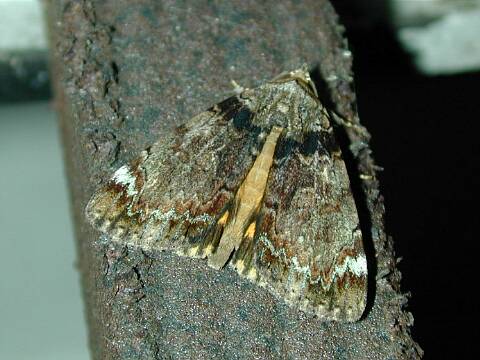
Catocala minuta "mellitula" courtesy of Steve Walter.
This site has been created by Bill Oehlke.
Comments, suggestions and/or additional information are welcomed by Bill.
| TAXONOMY:
Superfamily: Noctuoidea
Family: Noctuidae
Group: Noctuinina
Subfamily: Catocalinae
Genus: Catocala, Schrank, 1802
|
DISTRIBUTION:
Catocala minuta, the Little
Underwing (wingspan: 35-45mm), flies from New York to Florida and
west to Texas and north to South Dakota, Indiana and
Michigan.
Tom Middagh reports them in Minnesota.
A specimen was taken in Brantford, Ontario, by William G. Lamond in
July of 1995.
Arkansas,
Colorado,
Connecticut,
Delaware,
Georgia,
Illinois,
Iowa,
Kansas,
Kentucky,
Louisiana,
Maryland,
Massachusetts,
Mississippi,
Missouri,
Nebraska,
New Jersey,
Ohio,
Oklahoma,
Pennsylvania,
Rhode Island,
South Carolina,
Tennessee and
Wisconsin.
Jonathan Willey has recently confirmed Catocala minuta in Maryland.
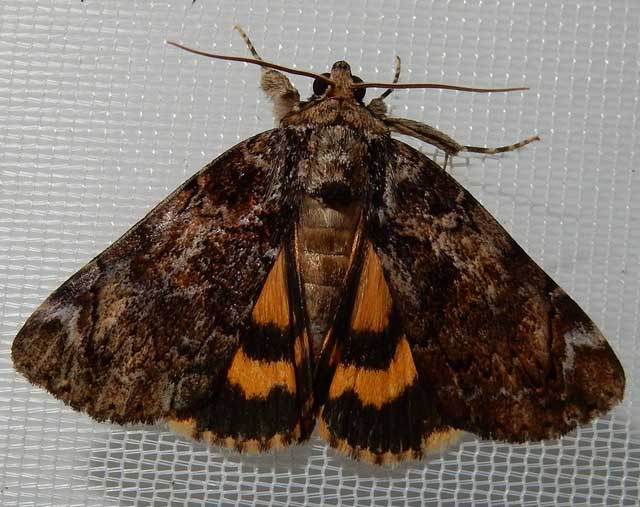
Catocala minuta, Cambridge, Dorchester County, Maryland,
July 6, 2016, courtesy of Jonathan Willey.
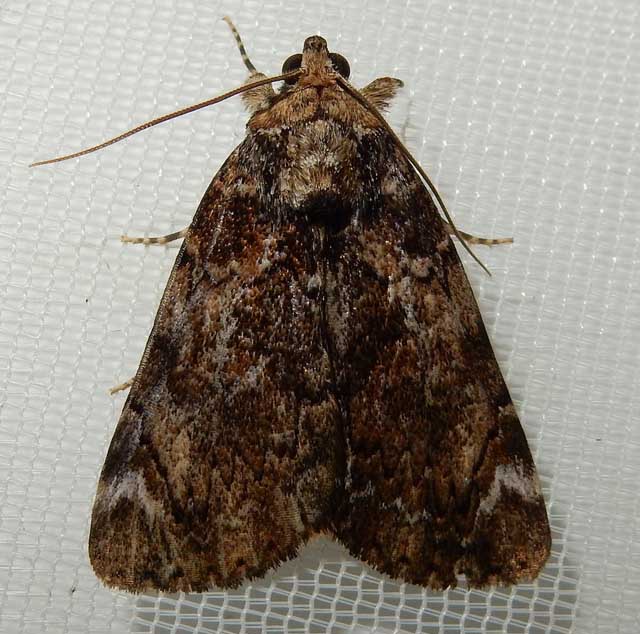
Catocala minuta, Cambridge, Dorchester County, Maryland,
July 6, 2016, courtesy of Jonathan Willey.
The forewing is generally grey-brown with a greatly widened (near the costa only), white, subterminal line.
The outer black band of the hindwing is unbroken and the inner band forms a complete loop with considerable brown scaling along the inner margin.
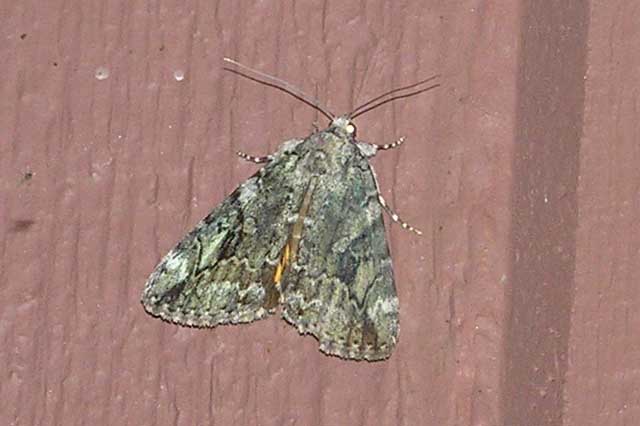
Catocala minuta, Medford, Taylor County, Wisconsin,
August 1, 2008, courtesy of Joan F. Rickert.
There are several forms:
"eureka" Schwarz has a blackish area between the antemedial and post medial lines;
"hiseri" Cassino has a dull grey forewing with very faint markings;
"mellitula" Hulst has a blackish patch in the basal area from the costa to the inner margin;
"obliterata" Schwarz is the melanic form, with an almost completely black forewing;
"parvula" W. H. Edwards has a broad dark patch along the inner margin of the forewing.
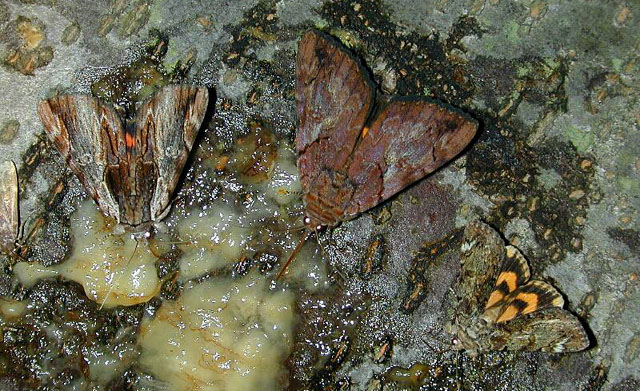
Catocala ultronia, Catocala muliercula and Catocala minuta
on fermenting tree sap
courtesy of Steve Walter, Floyd Bennet Field
(Jamaica Bay area of New York) July 6.
Steve writes, "The Little Wife is one of the signature species of Jamaica Bay -- but this one was 11 days (seems to be a magic number,
or times 2) earlier than the previous early date here. The Little Underwing was new for Jamaica Bay -- and I had 6 of them. Funny how that happens."
FLIGHT TIMES AND PREFERRED FOOD PLANTS:
Catocala minuta are usually on the wing from June to August.
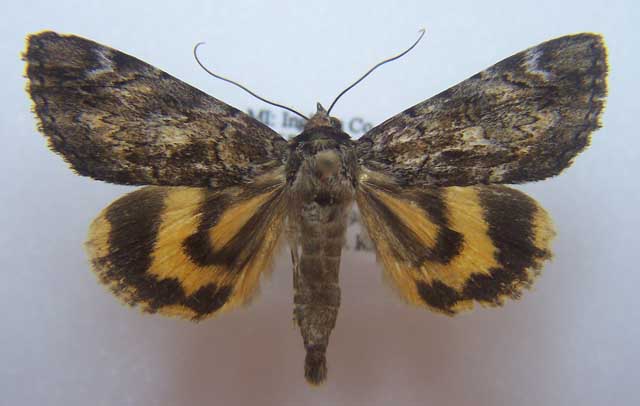
Catocala minuta, Mason, Ingham County, Michigan,
40mm, July 7, 1996, courtesy of Harry King.
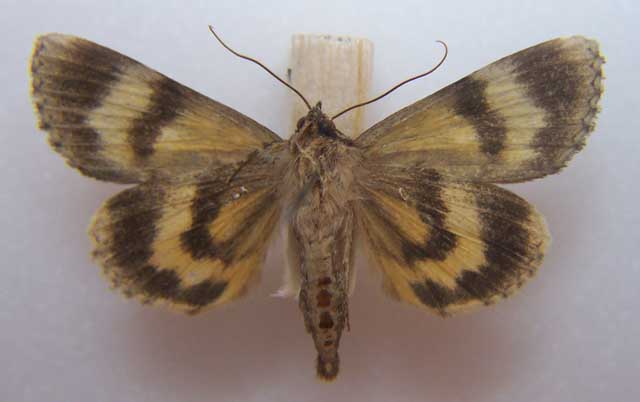
Catocala minuta, (verso) Mason, Ingham County, Michigan,
40mm, July 7, 1996, courtesy of Harry King.
The Catocala minuta caterpillar feeds on honey locust and water locust.
ECLOSION:
Adults eclose from pupae at soil surface.
SCENTING AND MATING:
Catocala minuta females emit an airbourne pheromone and males use their antennae to track the scent plume.
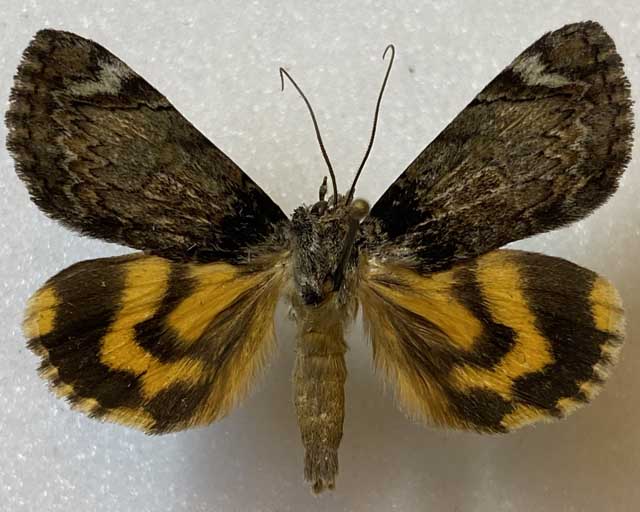
Catocala minuta form mellitula, Beldon, Cedar County, Nebraska,
June 30, 2022, courtesy of Scott Wehrly.
EGGS, CATERPILLARS, COCOONS, AND PUPAE:
Eggs are deposited on tree bark in the fall and hatch the following spring.
Larval Food Plants
Listed below are primary food plant(s) and alternate food plants. It is hoped that this alphabetical listing followed by the common
name of the foodplant will prove useful. The list is not exhaustive, although some species seem very host specific.
Experimenting with closely related foodplants is worthwhile.
Gleditsia aquatica
Gleditsia triacanthos......
|
Water locust
Honey locust
|
Use your browser "Back" button to return to the previous page.
Return to Main Catocala Index
Visit Harry King Michigan Catocala Collection.
This page is brought to you by Bill Oehlke and the
WLSS. Pages are on space rented from Bizland. If you would like to become a "Patron of the Sphingidae/Catocala Sites",
contact Bill.
Please send sightings/images to Bill. I will do my best to respond to requests for identification help.
Enjoy one of nature's wonderments: Live Saturniidae (Giant Silkmoth) cocoons.

|

To show appreciation for this site, click on the flashing
butterfly to the left, a link
to many worldwide insect sites. |
Return to Canadian Index
Return to Main Index









